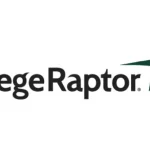A recent Gartner report on trends impacting higher education reveals an almost doubling of institutions investing in AI chatbots over the past year.
In 2020, the Gartner CIO survey found 16% of respondents reporting that they had invested in AI chatbots. In 2021, 30% reported the same.
Gartner notes that “Chatbots have reached an adoption inflection point in higher education where it soon will be one of many expected ‘multiexperience’ interaction channels for students, faculty and staff. Already, chatbots are becoming a ‘cost of entry’ for baseline student experience.”
Why are Chatbots and Higher Education a Good Match?
Gartner sees the business case for higher education through two immediate benefits:
- Hard savings through intelligent automation/augmentation by handling more questions with the same (or reduced) number of staff
- Soft benefits such as improved student experience by making support functions available 24/7
Chronicle of Higher Education Survey Bolsters Gartner’s Findings
In February 2022, the Chronicle of Higher Education surveyed 519 higher education senior administrators. The survey found that digital transformation is gaining greater urgency among colleges and universities. Notable findings:
- 9 out of 10 colleges agree that digital transformation is key to their institution’s future
- 9 out of 10 colleges say the pandemic has sped up digital transformation on their campus
Differences Among Higher Ed Sectors
The portion of administrators who said these options were “very important” goals for digital transformation:
| Two-Year Colleges | Four-Year Colleges | |
| Increase Enrollment | 70% | 59% |
|
Improve Student Services |
84% | 67% |
|
Improve the Educational Experience Online |
84% | 67% |
|
Improve the Educational Experience in the Classroom |
84% | 67% |
|
Increase Operational Efficiency |
80% | 69% |
Take-Aways
The two reports – one from Gartner and the other from the Chronicle – reveal an accelerated pace of digital transformation, with technologies such as chatbots being a focus. Both four-year and two-year institutions see the urgent need for change. Two-year institutions are signaling that they have a greater urgency compared to the four-year institutions. Nonetheless, both segments – with large majorities of responses – are indicating that digital transformation is important for enrollment, the student educational experience, and student support. There are also valuable operational efficiencies that come with digital transformation.















